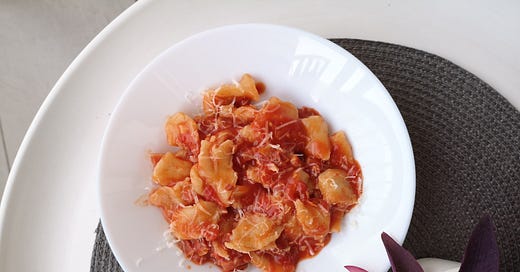The Capsule Pantry in one sentence: Reduce your food waste by “thinking like a chef” with highly flexible recipes based on a capsule pantry of just 50 ingredients.
Living in Rome for a month has been on my bucket list for years. On Sunday, it became a reality (well, 3 weeks, but that’s close enough for me).
Like so many millions before me, I’ve come here to eat. In particular, the four pasta dishes Rome is so famous for: Carbonara, Gricia, Cacio e Pepe and Amatriciana. I want to know how to make them properly with local ingredients. I want to learn how to emulsify my sauces properly. Most of all, I want to eat them. And lots of them.
I started with Amatriciana, both eating it out and making it at home. This is the sort of recipe I love. Very simple but if you get the right ingredients - and get that sauce right - it’s elevated beyond a simple tomato pasta.
It’s also very Simple and Straightfoward-friendly. Like most Italian dishes, there are hundreds of variations depending on whose nonna is making it. And it can be made mostly with what you probably have in your cupboard and fridge at home, especially if you follow my capsule storecupboard.
Let’s do as the Romans do and get cooking.
Key: Bold = Capsule Pantry ingredients
Serves 4
Keep reading with a 7-day free trial
Subscribe to This much I know to keep reading this post and get 7 days of free access to the full post archives.






